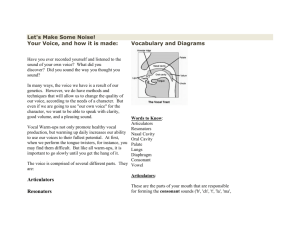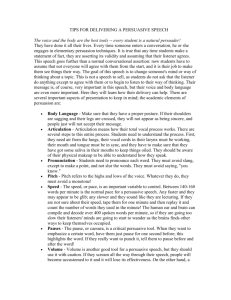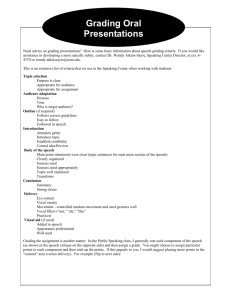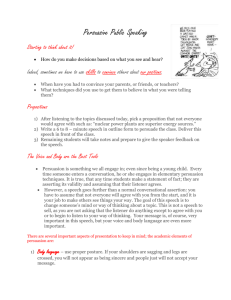One of the basic elements of music is called color, or timbre
advertisement
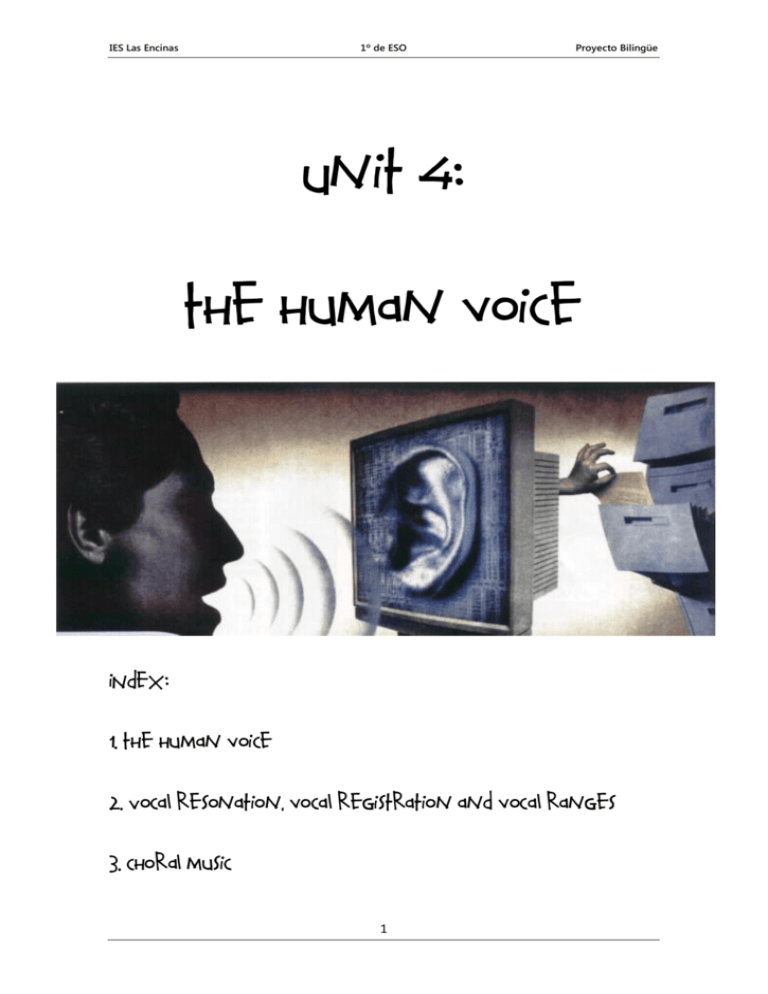
IES Las Encinas 1º de ESO Proyecto Bilingüe Unit 4: The human voice INDEX: 1. The human voice 2. Vocal resonation, vocal registration and vocal ranges 3. Choral music 1 IES Las Encinas 1º de ESO Proyecto Bilingüe Basic vocabulary Articulators: articuladores. To label: etiquetar, nombrar. Cheek: mejilla. Tone: tono. Chest: pecho. Tongue: lengüa. Choir: coro. Trachea: traquea. Larynx (voice box): laringe. Vocal chords: cuerdas vocales. Lips: labios. Vocal range: registro vocal. Lungs: pulmones. Within: dentro de, en menos de. Nasal cavity: cavidad nasal. Oral cavity: cavidad bucal. Palate: paladar. Pharynx: faringe. Phonation: fonación. Range: registro. Resonators: resonadores. Sinuses: senos sinusoidales. To enhance: mejorar. 2 IES Las Encinas 1º de ESO Proyecto Bilingüe 1. The human voice The human voice consists of sound made by a human being using the vocal chords for talking, singing, laughing, crying, screaming, etc. Generally speaking, the voice can be subdivided into four parts: the breathing, the vocal chords, the articulators and the resonators. The lungs must produce enough airflow to vibrate the vocal chords (air is the fuel of the voice). The vocal chords are the vibrators that produce the fine pitch and tone. The articulators (tongue, palate, cheek, lips, etc.) articulate and filter the sound. Finally, the resonators amplify and intensify the sound: the end result of resonation is, or should be, to make a better sound. The vocal chords, together with the articulators and the resonators, are capable of producing a lot of sounds. The tone of voice may be modulated to suggest emotions such as anger, surprise, or happiness. Singers use the human voice as an instrument for creating music. 3 IES Las Encinas 1º de ESO Proyecto Bilingüe 2. Vocal resonation. register and vocal ranges Vocal resonation is the process by which the timbre and/or intensity of the sound is enhanced by the use of the air-filled cavities in the body. There are seven areas that may be listed as possible vocal resonators. These areas are the chest, the trachea, the larynx (voice box), the pharynx, the oral cavity, the nasal cavity and the sinuses. The vocal resonators Register and vocal Ranges A register in the human voice is a particular series of sounds where a singer can sing comfortably and possess the same quality (timbre, power, cleanliness...). Voices are classified into ranges. The differences between them are distinguished between men´s and women´s voices and the individual register of each singer. -Soprano: A high female (or young boy’s) voice. -Mezzo-soprano: In between soprano and alto. -Alto: A low female (or young boy’s) voice. -Countertenor: A male voice that is unusually high, light, and agile, even for a tenor. 4 IES Las Encinas 1º de ESO Proyecto Bilingüe -Tenor: A high (adult) male voice. -Baritone: A male voice that falls in between tenor and bass. -Bass: A low (adult) male voice. Voices are as individual as faces; some altos will have a smaller or bigger register, or the softest and strongest part of their range might be in a different place than other altos. 3. Choral music A choir, chorale, or chorus is a musical ensemble of singers. Choral Music, therefore, is the music written specifically for a choir to perform. Choirs are often led by a conductor or choirmaster and can be categorized by the voices: Mixed choirs (i.e., with male and female voices). This is perhaps the most common type, usually consisting of soprano, alto, tenor and bass voices, often abbreviated as SATB. Male choirs, with the same SATB voicing as mixed choirs, but with boys singing the upper part (often called treble or boy soprano) and men singing alto (in falsetto), also known as countertenor. This format is typical of British cathedral choirs. Female choirs, usually consisting of soprano and alto voices, two parts in each. Children's choirs, often two-part SA or three-part SSA, sometimes more voices. This includes boys’ choirs. 5




